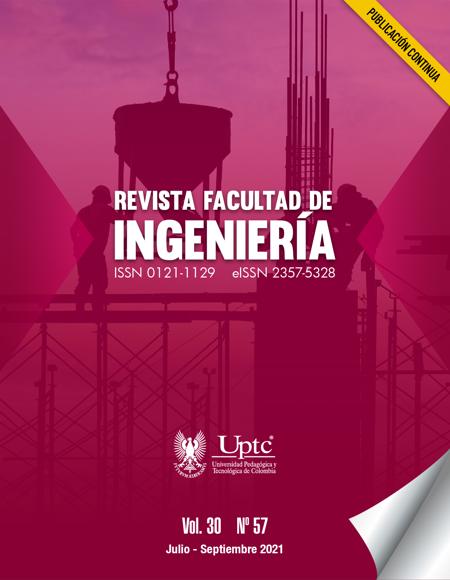Spectral Seismic Analysis of Vertical Cylindrical Steel Tanks

Abstract
The dynamic response results of a vertical cylindrical steel tank located in the south-eastern zone of the Republic of Cuba are analyzed. The tank was subjected to horizontal seismic excitation from the development of different calculation models, taking as reference the API 650 design code of 2013 and the parameters that characterize the seismic hazard of the Republic of Cuba established in the design code NC 46: 2017. In the investigation, two mathematical calculation models were implemented: a simplified one based on the equivalent mechanical system described by Housner in 1963 and a complex model, which integrates the finite element technique and the spectral modal analysis method with the help of the professional software SAP2000, v.22.0. When analyzing the research results, it was concluded that (1) the values of periods in tanks are high due to the fluctuations of the stored fluid; (2) there is an agreement between the analytical method specified in API. 650 and computational models based on finite elements; (3) the model developed from finite elements corroborates the existence of deformations in the lower part of the tank walls, which is known as "elephant foot" and "diamond point", as well as buckling in the upper part of the sidewall of the tank caused by the effect of the waves; and (4) according to the aspect ratios considered (H/R), in which the radius tank is constant, the value of the convective period decreases as said aspect ratio decreases; becoming the less dominant impulsive mode.
Keywords
convective, cylindrical tanks, finite element, impulsive, response spectrum
Author Biography
Nelson Saint-Felix-López
Roles: conceptualization, information search, analysis, writing - revision and editing.
Eduardo-Rafael Álvarez-Deulofeu
Roles: writing - revision and editing.
Dario Candebat-Sánchez
Roles: writing - revision and editing.
References
- E. Car, F. López Almansa, S. Oller, Estructuras sometidas a acciones dinámicas, Centro Internacional de Métodos Numéricos en Ingeniería, 2000
- M. E. Compagnoni, R. O. Curadelli, C. A. Martínez, "Análisis del comportamiento dinámico de tanques," Mecánica Computacional, vol. 31, no. 13, pp. 2219-2230, 2012
- J. I. Chang, C. C. Lin, "A study of storage tank accidents," Journal of Loss Prevention in the Process Industries, vol. 19, no. 1, pp. 51-59, 2006. https://doi.org/10.1016/j.jlp.2005.05.015 DOI: https://doi.org/10.1016/j.jlp.2005.05.015
- E. W. Graham, A. M. Rodriquez, "Characteristics of Fuel Motion Which Affect," Journal of Applied Mechanics, vol. 19, no. 3, e1952. DOI: https://doi.org/10.1115/1.4010515
- G. W. Housner, "Earthquake Pressures on Fluid Containers," in Eighth Technical Report under Office of Naval Research, pp. 1-42, 1954.
- G. W. Housner, "Dynamic Pressures on Accelerated Fluid Containers," Bulletin of the Seismological Society of America, vol. 47, no. 1, pp. 15-35, 1957. https://doi.org/10.1785/bssa0470010015 DOI: https://doi.org/10.1785/BSSA0470010015
- G. W. Housner, "The Dynamic Behavior of Water Tanks," Bulletin of the Seismological Society of America, vol. 53, no. 2, pp. 381-387, 1963. https://doi.org/10.1785/bssa0530020381 DOI: https://doi.org/10.1785/BSSA0530020381
- A. Petroleum Institute, API STANDARD 650. Welded Tanks for Oil Storage, Twelfth Edition, p. 243, 2013
- O. N. Normalización (NC), Norma Cubana NC. 46:2017. Construcciones Sismorresistentes. Requisitos Básicos para el Diseño y Construcción, 2017
- N. M. Newmark, W. J. Hall, Earthquake spectra and design, M. S. Agbatian, Ed., Berkley, California: Earthquake Engineering Research Institute, pp. 33-37, 1982.
- A. M. Pupiales Valdivieso, "Análisis de la interacción fluido-estructura en el diseño sísmico de tanques cilíndricos de acero según las normas: americana, neozelandesa, ecuatoriana y métodos simplificados," Grade Thesis, Universidad de San Francisco de Quito: USFQ, 2013
- W. Edward L., Three-Dimensional Static and Dynamic Analysis of Structures: A Physical Approach with Emphasis on Earthquake Engineering, Computer and Structures, Inc., Berkeley, California, USA, 2000